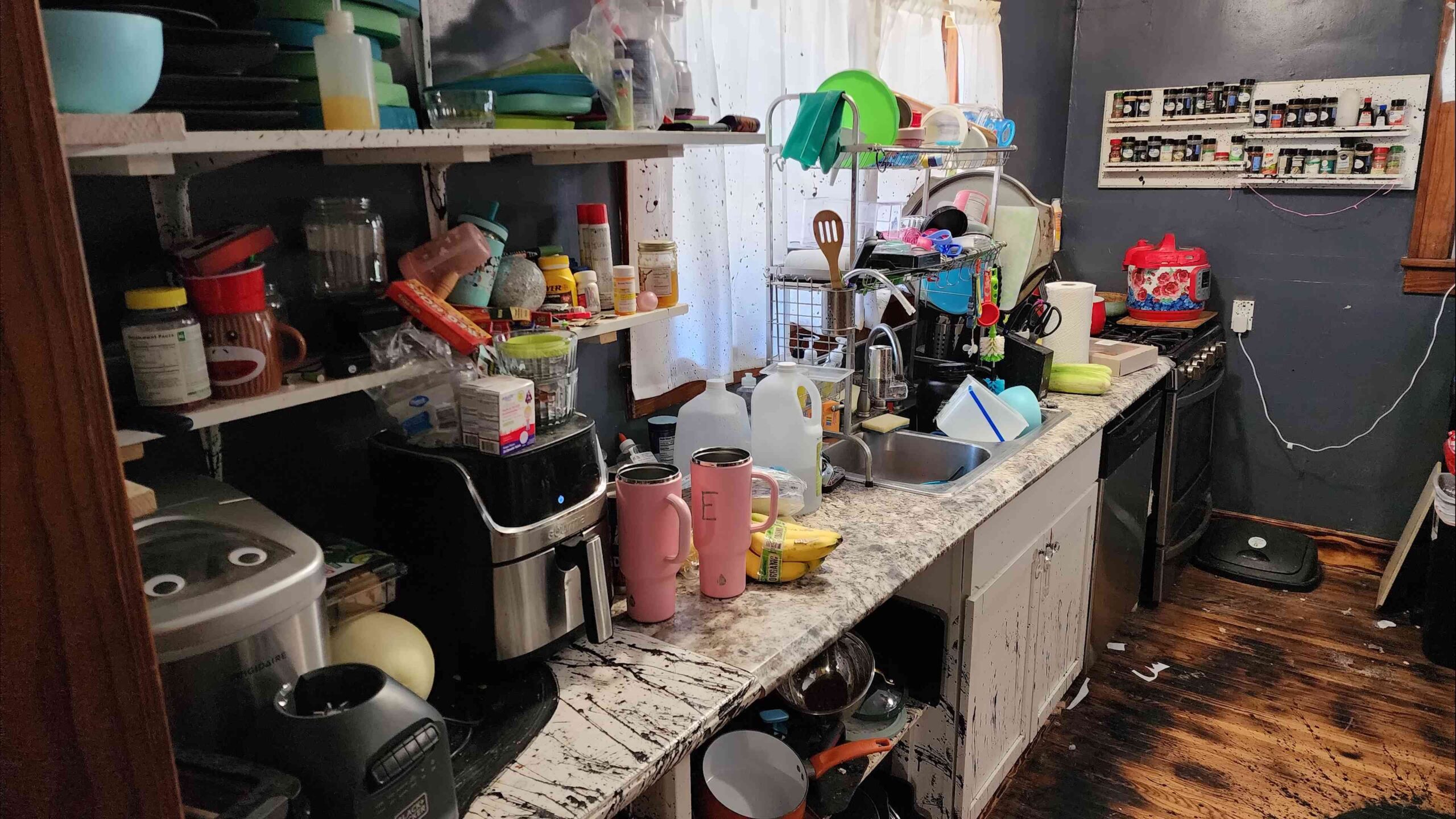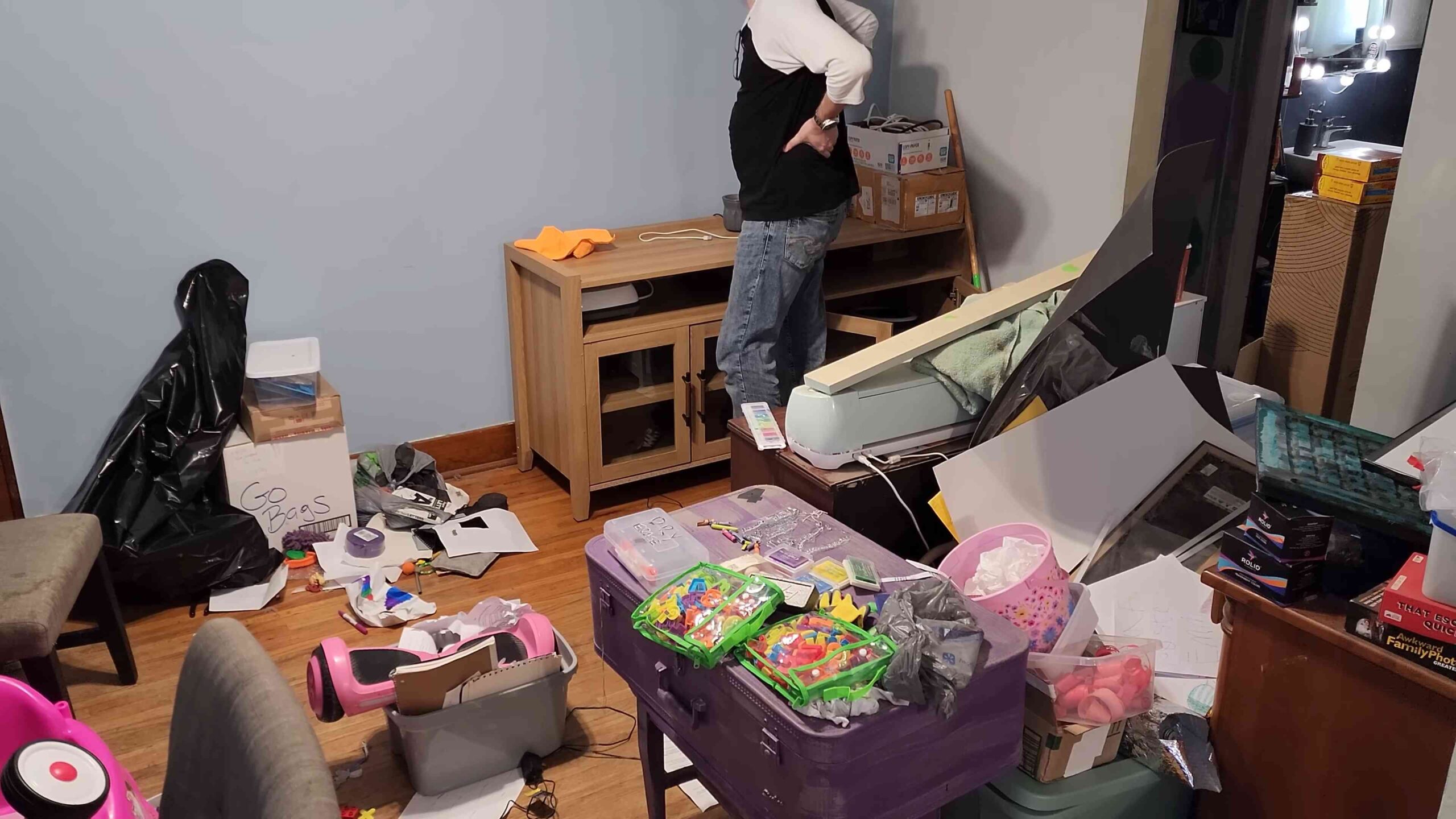Home decluttering tips – are you drowning in clutter? I know the feeling! It’s like your belongings are staging a hostile takeover of your living space. But fear not, because I’m here to share some amazing DIY tricks that will help you reclaim your home and your sanity.
For centuries, cultures around the world have recognized the importance of a tidy home. From the ancient practice of Feng Shui, which emphasizes the flow of energy through a space, to the minimalist philosophies embraced by various societies, the idea of decluttering has deep roots. It’s not just about aesthetics; it’s about creating a peaceful and functional environment that supports your well-being.
Why do you need these home decluttering tips? Because clutter isn’t just visually unappealing; it can actually impact your mental health. Studies have shown that a cluttered environment can lead to increased stress, anxiety, and even difficulty concentrating. Plus, let’s be honest, who wants to spend hours searching for their keys in a mountain of stuff?
This article is packed with simple, effective, and budget-friendly DIY solutions to help you tackle even the most overwhelming clutter. Get ready to transform your home into a haven of peace and order. Let’s dive in!

DIY Decluttering: Conquer Your Clutter and Reclaim Your Space!
Hey there, fellow decluttering enthusiasts! Feeling overwhelmed by the sheer volume of stuff in your home? I totally get it! It’s easy to accumulate belongings, but letting go can be tough. But trust me, the feeling of freedom and spaciousness you’ll experience after a good decluttering session is totally worth it. This guide is packed with tips and tricks to help you tackle your clutter head-on and create a home you truly love. Let’s dive in!
Getting Started: Mindset and Preparation
Before you even touch a single item, it’s important to get your mindset right and prepare for the task ahead. This isn’t just about throwing things away; it’s about creating a more functional and enjoyable living space.
* Define Your Goals: What do you hope to achieve by decluttering? Do you want a more organized kitchen, a more relaxing bedroom, or simply a less cluttered home overall? Writing down your goals will help you stay focused and motivated.
* Schedule Time: Decluttering takes time, so schedule dedicated blocks of time in your calendar. Don’t try to do everything at once. Start with smaller, manageable areas and gradually work your way up. Even 30 minutes a day can make a big difference!
* Gather Supplies: You’ll need a few essential supplies to make the process smoother. Here’s what I recommend:
* Boxes or bags for donations, trash, and items to relocate.
* Cleaning supplies (dust cloths, all-purpose cleaner, vacuum).
* Labels and a marker for organizing boxes.
* A timer to stay on track.
* Music or a podcast to keep you entertained!
* The Four-Box Method: This is my go-to strategy for decluttering any space. Set up four boxes labeled:
* Keep: Items you use regularly and love.
* Donate/Sell: Items in good condition that you no longer need or want.
* Trash: Items that are broken, damaged, or unusable.
* Relocate: Items that belong in a different area of your home.
Decluttering Room by Room: A Practical Guide
Now that you’re prepared, let’s get down to the nitty-gritty of decluttering each room. I’ll walk you through my favorite strategies and tips for tackling common clutter hotspots.
1. The Kitchen: Conquer the Culinary Chaos
The kitchen is often the heart of the home, but it can also be a major clutter magnet. Here’s how to whip it into shape:
1. Clear the Counters: Start by removing everything from your countertops. This will give you a clear view of the space and make it easier to clean.
2. Assess Appliances: Do you really need that panini press you’ve used twice in the last five years? Be honest with yourself. Donate or sell appliances you rarely use.
3. Tackle the Pantry: Remove everything from your pantry shelves. Check expiration dates and toss anything that’s past its prime. Group similar items together and use clear containers to keep things organized.
4. Organize Utensils and Gadgets: Go through your drawers and cupboards and get rid of duplicates or items you never use. Consider using drawer organizers to keep things tidy.
5. Declutter Cookware: How many pots and pans do you really need? Donate any that are scratched, dented, or rarely used.
6. Clean as You Go: Wipe down counters, shelves, and drawers as you declutter. This will make the process feel even more rewarding.
2. The Living Room: Create a Relaxing Oasis
The living room should be a comfortable and inviting space. Here’s how to declutter it and create a relaxing oasis:
1. Clear Surfaces: Remove clutter from coffee tables, shelves, and other surfaces. Less is more!
2. Declutter Books and Media: Be ruthless with your book collection. Donate or sell books you’ve already read or don’t plan to read again. Do the same with DVDs, CDs, and other media.
3. Tackle Electronics: Gather all your remote controls, cables, and chargers. Get rid of any that are no longer needed and organize the rest in a drawer or container.
4. Assess Decor: Do you really love all the decorative items in your living room? Donate or sell anything that doesn’t bring you joy.
5. Organize Storage: Use baskets, bins, and shelves to organize toys, blankets, and other items.
3. The Bedroom: A Sanctuary for Sleep
Your bedroom should be a peaceful sanctuary for sleep and relaxation. Here’s how to declutter it and create a calming atmosphere:
1. Clear the Nightstand: Remove clutter from your nightstand, such as books, magazines, and electronics. Keep only the essentials.
2. Declutter Your Closet: This is a big one! Go through your closet and get rid of any clothes you haven’t worn in the past year, that don’t fit, or that you don’t love.
3. Organize Your Dresser: Fold or hang your clothes neatly in your dresser. Use drawer organizers to keep things tidy.
4. Declutter Under the Bed: Remove anything that’s stored under your bed. If you must store items there, use flat storage containers to keep things organized.
5. Create a Relaxing Atmosphere: Add calming elements to your bedroom, such as soft lighting, comfortable bedding, and soothing scents.
4. The Bathroom: Streamline Your Routine
The bathroom can easily become cluttered with toiletries and personal care products. Here’s how to declutter it and streamline your routine:
1. Clear the Countertops: Remove everything from your countertops. This will give you a clear view of the space and make it easier to clean.
2. Check Expiration Dates: Go through your toiletries and personal care products and toss anything that’s expired.
3. Organize Under the Sink: Use organizers to store cleaning supplies, toiletries, and other items under the sink.
4. Declutter the Shower/Tub: Get rid of any empty bottles or products you no longer use.
5. Streamline Your Routine: Keep only the products you use regularly on your countertops. Store the rest in drawers or cabinets.
5. The Home Office: Boost Productivity
A cluttered home office can hinder productivity. Here’s how to declutter it and create a more efficient workspace:
1. Clear Your Desk: Remove everything from your desk except for the essentials.
2. Organize Papers: Sort through your papers and get rid of anything you no longer need. File important documents in labeled folders.
3. Declutter Supplies: Go through your office supplies and get rid of duplicates or items you never use.
4. Tackle Electronics: Organize your cables and chargers. Consider using a cable management system to keep things tidy.
5. Create a Designated Workspace: Make sure you have a comfortable chair, good lighting, and a clutter-free workspace.
Maintaining Your Clutter-Free Home: Long-Term Strategies
Decluttering is an ongoing process, not a one-time event. Here are some strategies to help you maintain your clutter-free home in the long term:
* The One-In, One-Out Rule: For every new item you bring into your home, get rid of one similar item.
* Regular Purges: Schedule regular decluttering sessions, even if it’s just for 15 minutes a week.
* Avoid Impulse Purchases: Think carefully before buying anything new. Do you really need it? Will it add value to your life?
* Find a Place for Everything: Everything in your home should have a designated place. This will make it easier to put things away and prevent clutter from accumulating.
* Don’t Be Afraid to Ask for Help: If you’re struggling to declutter on your own, don’t be afraid to ask a friend, family member, or professional organizer for help.
Bonus Tip: The 20-Minute Rule
Feeling overwhelmed? Try the 20-minute rule! Set a timer for 20 minutes and focus on decluttering one small area. You’ll be surprised how much you can accomplish in just 20 minutes. This is a great way to tackle small pockets of clutter without feeling overwhelmed.
I hope these tips and strategies help you conquer your clutter and create a home you truly love! Remember, decluttering is a journey, not a destination. Be patient with yourself, celebrate your progress, and enjoy the process! You’ve got this!

Conclusion
So, there you have it! This simple yet incredibly effective DIY home decluttering trick is a game-changer for anyone struggling to maintain a tidy and organized living space. We’ve all been there – overwhelmed by clutter, unsure where to start, and feeling like the task is simply insurmountable. But with this approach, breaking down the decluttering process into manageable chunks and focusing on one area at a time, you can transform your home and your mindset.
The beauty of this DIY home decluttering method lies in its adaptability. It’s not a rigid system; it’s a framework that you can tailor to your specific needs and preferences. Feeling ambitious? Tackle a larger area like a closet or a whole room. Short on time? Focus on a single drawer or shelf. The key is consistency and making progress, no matter how small.
Consider these variations to further personalize your decluttering journey:
* **Themed Decluttering:** Instead of focusing on a specific area, declutter based on a theme. For example, dedicate a session to decluttering all your books, another to decluttering your clothes, and another to decluttering your kitchen gadgets. This can be particularly effective if you find yourself accumulating a lot of one type of item.
* **The “One In, One Out” Rule:** Implement this rule going forward. For every new item you bring into your home, get rid of one similar item. This helps prevent future clutter buildup and encourages mindful consumption.
* **The Donation Box Method:** Keep a donation box in a convenient location. As you come across items you no longer need or use, immediately toss them into the box. Once the box is full, donate it to a local charity. This makes the decluttering process even easier and more rewarding.
* The Sentimental Item Challenge: Sentimental items are often the hardest to declutter. Try this: for each sentimental item you’re hesitant to get rid of, ask yourself if it truly brings you joy or if you’re simply holding onto it out of obligation or guilt. If it doesn’t spark joy, consider taking a photo of it and then letting it go.
This DIY home decluttering strategy isn’t just about tidying up; it’s about creating a more peaceful and functional living environment. A decluttered home can lead to a decluttered mind, reducing stress and improving overall well-being. Imagine the feeling of walking into a clean, organized space where everything has its place. It’s a feeling of calm, control, and clarity.
We truly believe that this DIY home decluttering trick can make a significant difference in your life. It’s simple, effective, and adaptable to your individual needs. Don’t let clutter control you any longer. Take control of your space and experience the transformative power of decluttering.
We encourage you to give this DIY home decluttering method a try. Start small, be patient with yourself, and celebrate your progress along the way. And most importantly, share your experience with us! We’d love to hear your success stories, your challenges, and any tips or variations you discover. Let’s create a community of decluttering enthusiasts and support each other in our journey towards a more organized and fulfilling life. Leave a comment below or tag us on social media – we can’t wait to see your transformations!
Frequently Asked Questions (FAQ)
What if I get overwhelmed during the decluttering process?
It’s completely normal to feel overwhelmed, especially when dealing with a large amount of clutter. The key is to break the process down into even smaller, more manageable tasks. Instead of trying to declutter an entire room in one go, focus on a single drawer, shelf, or corner. Set a timer for 15-20 minutes and work on that small area until the timer goes off. Then, take a break and come back to it later. Remember, progress is progress, no matter how small. Also, don’t be afraid to ask for help from a friend or family member. Having someone to assist you can make the process less daunting and more enjoyable.
How do I decide what to keep and what to get rid of?
This is often the most challenging part of decluttering. Here are some questions to ask yourself when deciding whether to keep an item:
* Have I used this item in the past year? If not, chances are you don’t need it.
* Does this item bring me joy? If it doesn’t spark joy or serve a practical purpose, it’s probably time to let it go.
* Is this item replaceable? If you can easily replace it if you need it in the future, it might be worth decluttering.
* Am I keeping this item out of obligation or guilt? Don’t hold onto things simply because someone gave them to you or because you feel guilty about getting rid of them.
* Do I have duplicates of this item? If so, consider keeping only the best one and decluttering the rest.
Be honest with yourself and try to be objective. It can also be helpful to create three piles: “Keep,” “Donate/Sell,” and “Trash.” As you go through your items, place them in the appropriate pile.
What should I do with the items I declutter?
Once you’ve decluttered your items, you have several options:
* **Donate:** Donate gently used items to local charities, shelters, or donation centers. This is a great way to give back to your community and help those in need.
* **Sell:** Sell valuable items online or at a consignment shop. This can be a good way to recoup some of your money and give your items a second life.
* **Recycle:** Recycle items that can be recycled, such as paper, plastic, and metal.
* **Trash:** Dispose of items that are broken, damaged, or no longer usable.
Be sure to dispose of your items responsibly and ethically.
How can I prevent clutter from building up again?
Preventing clutter buildup is just as important as decluttering in the first place. Here are some tips to help you maintain a clutter-free home:
* **Implement the “One In, One Out” Rule:** For every new item you bring into your home, get rid of one similar item.
* **Shop Mindfully:** Before buying something new, ask yourself if you really need it and if you have space for it.
* **Put Things Away Immediately:** Don’t let items pile up on counters, tables, or floors. Put things away as soon as you’re done using them.
* **Declutter Regularly:** Schedule regular decluttering sessions to prevent clutter from building up again. Even just 15 minutes a week can make a big difference.
* **Avoid Impulse Purchases:** Resist the urge to buy things you don’t need, especially when they’re on sale.
* Create Designated Storage Spaces: Ensure everything in your home has a designated place. This makes it easier to put things away and prevents clutter from accumulating.
What if I have trouble letting go of sentimental items?
Sentimental items can be the hardest to declutter, but it’s important to remember that you don’t have to get rid of everything. Here are some tips for dealing with sentimental items:
* **Take Photos:** Take photos of sentimental items that you’re hesitant to get rid of. This allows you to preserve the memories associated with the item without having to keep the physical object.
* **Create a Memory Box:** Designate a special box or container for sentimental items. This allows you to keep your most cherished items without cluttering up your entire home.
* **Ask Yourself Why You’re Holding Onto It:** Are you holding onto it out of love, guilt, or obligation? If it’s not bringing you joy, it might be time to let it go.
* **Share the Item with Someone Else:** If you’re having trouble letting go of a sentimental item, consider giving it to someone who would appreciate it more.
* Limit the Number of Sentimental Items You Keep: Set a limit on the number of sentimental items you’ll keep. This forces you to be more selective and prioritize the items that are most meaningful to you.
Remember, decluttering is a process, not a race. Be patient with yourself and celebrate your progress along the way. This DIY home decluttering method is designed to help you create a more organized and fulfilling life, one step at a time.





Leave a Comment